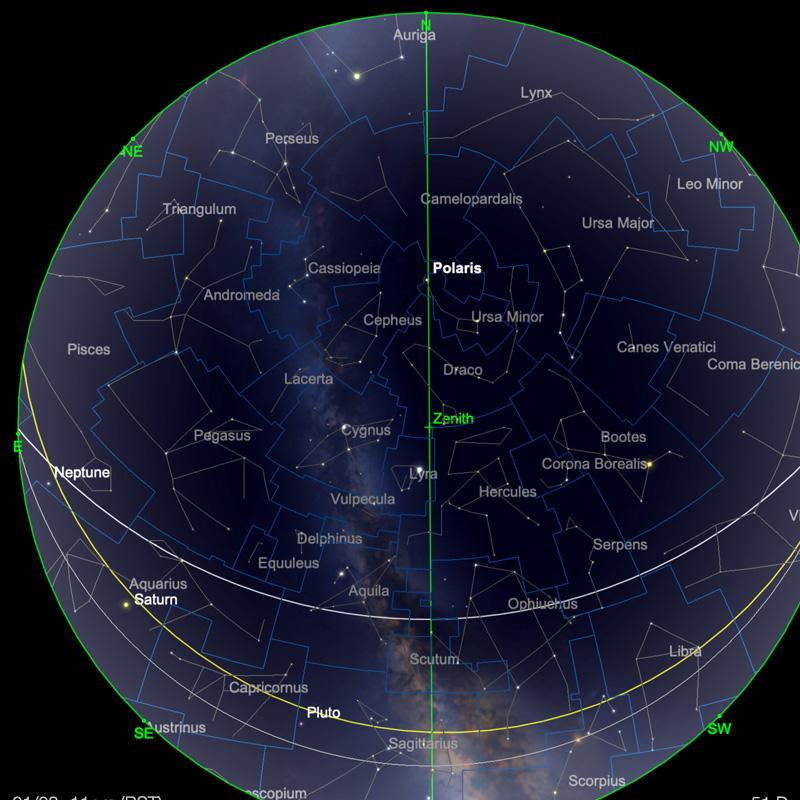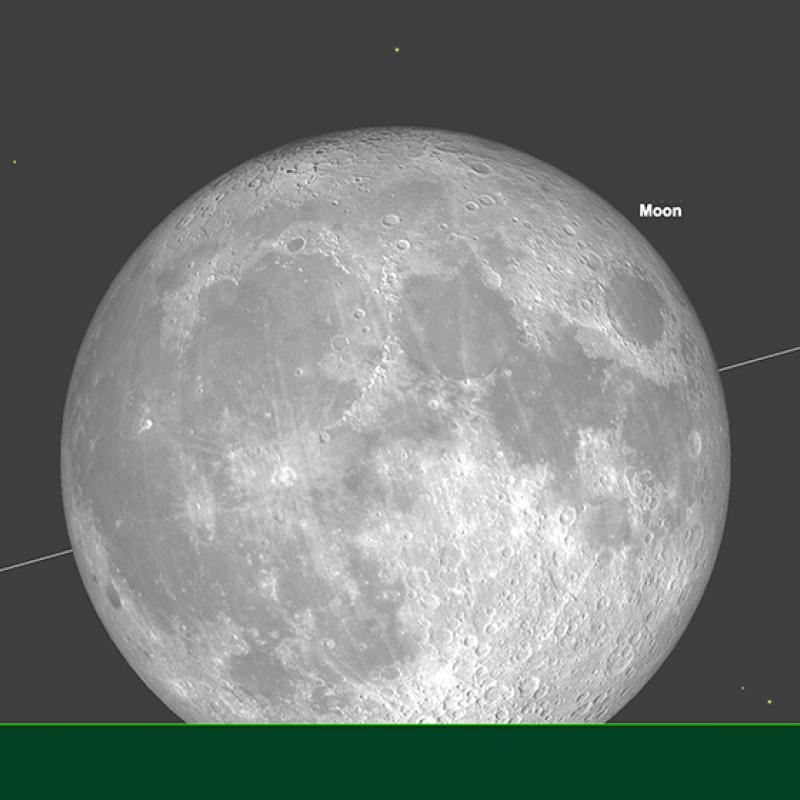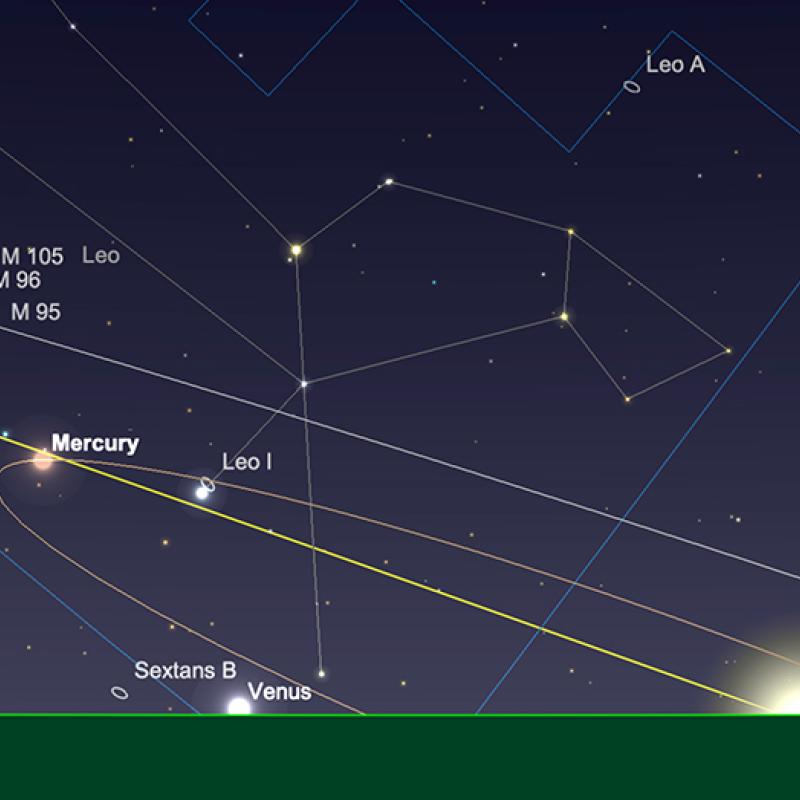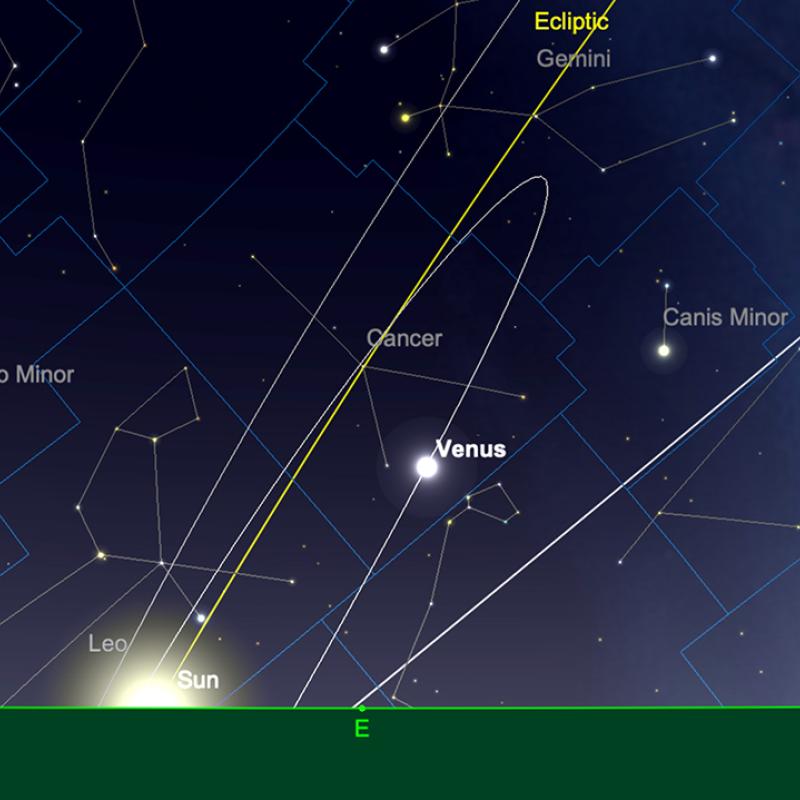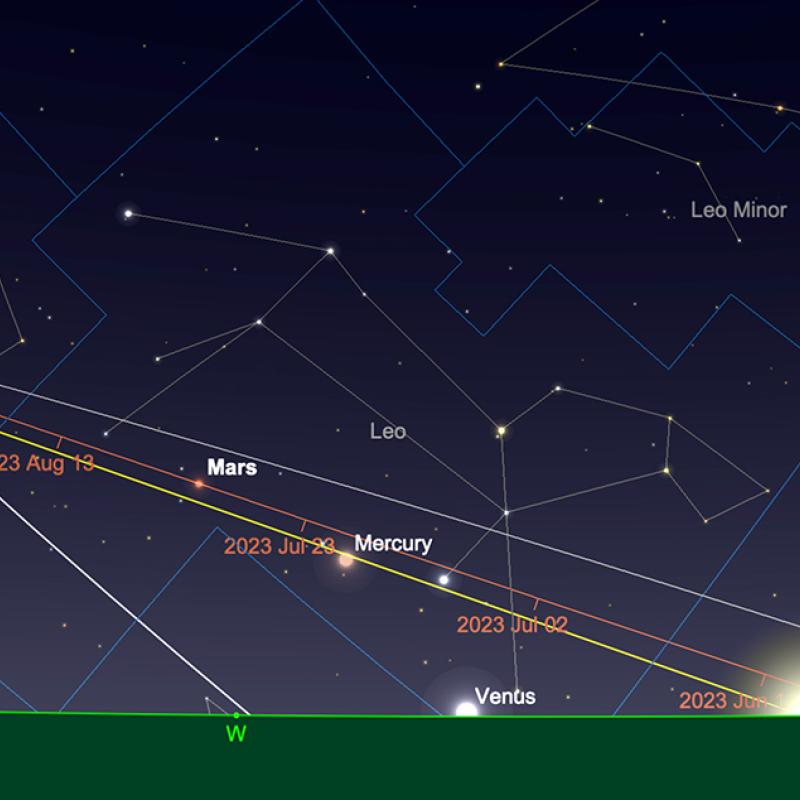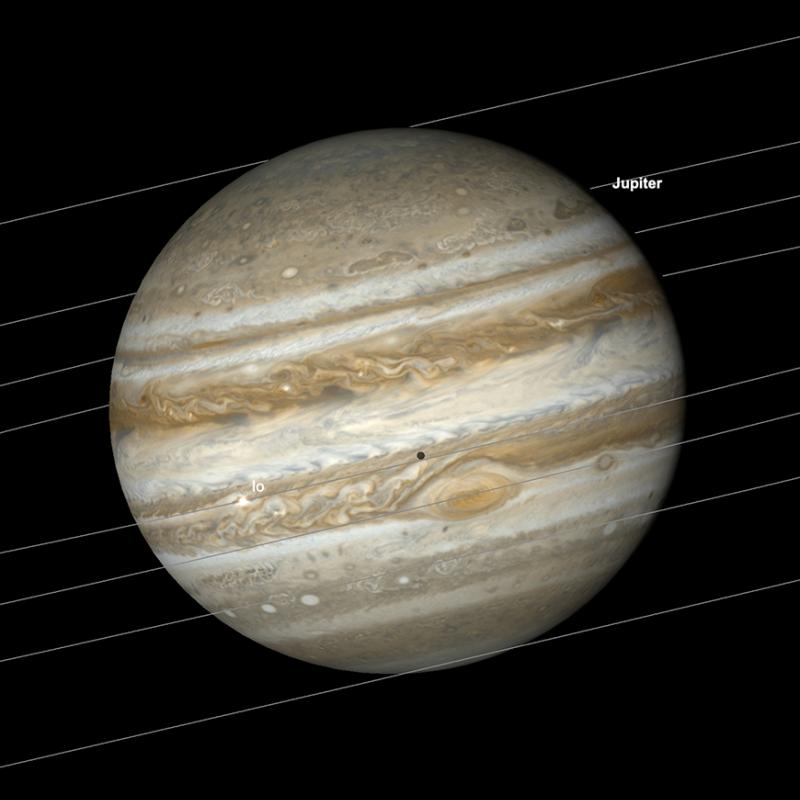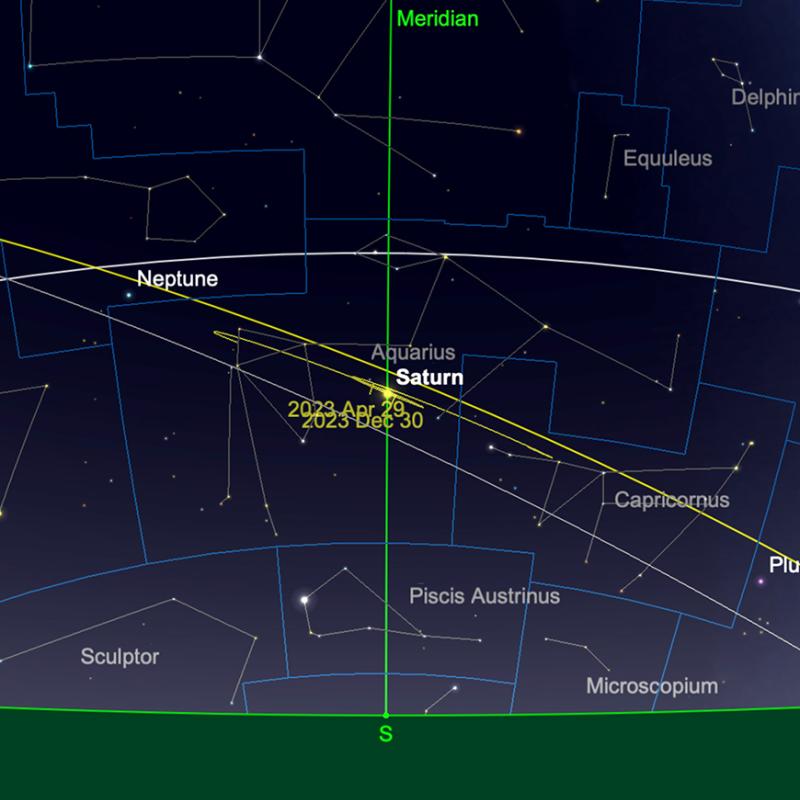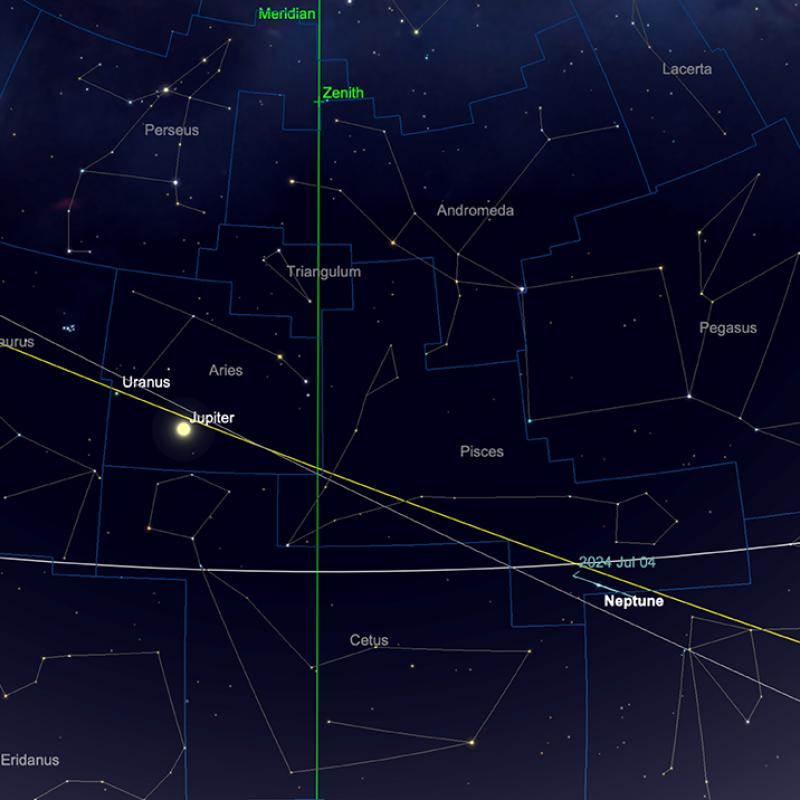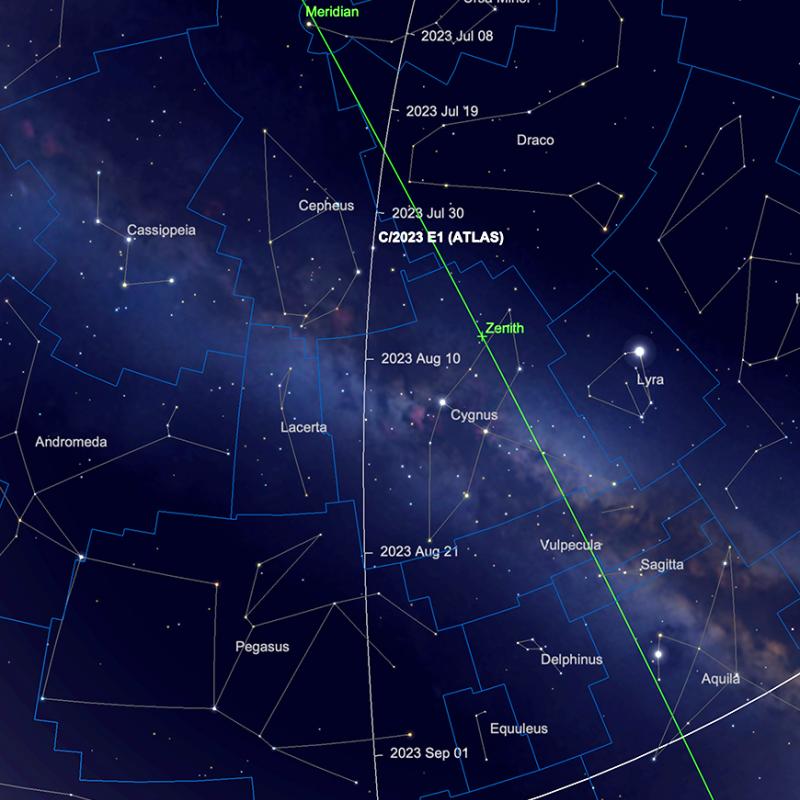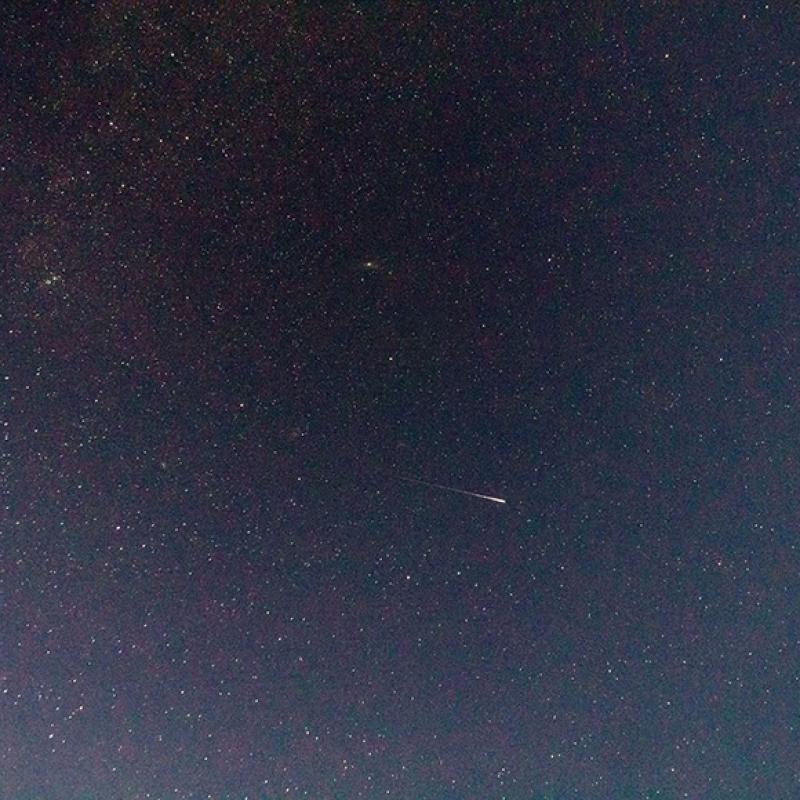Telescope House Hosted by Bresser UK August 2023 Sky Guide
For many of those in higher northern latitudes, August represents the return of true darkness. However, the higher the latitude you are, the more gradual this will be. August is often one of the more comfortable months to observe at night in the northern hemisphere, as nighttime temperatures are rarely cold and can often be extremely clement. With the expanse of the Summer Milky Way transiting in the earlier part of evenings, this time of year represents a good opportunity for deep sky observation, as there are plethora of interesting objects to observe, some of which will be covering in our deep sky delight section. We also have the ever-reliable Perseid meteor shower which will be visible from the early part of the month and peaking this year on the 12th-13th of August.
So, without further ado, let’s see what’s in store for us in the skies above us this coming month…
The Solar System
The Sun
Our parent star remains very active, with mini sunspots, other surface features and prominences visible on a daily basis. The most energetic of recent sunspots, AR3372 and AR3373, have been making their presence felt and have the potential to unleash M class solar flares, which are amongst the most energetic the Sun can muster (barring the even more powerful X class flares). It’s worth keeping a watchful eye on this group, as they have the potential to trigger lower latitude auroral activity.
As ever, safety is paramount, with attempt to any observation of the Sun. Inexpensive Solar Film can be used to cover the aperture of telescopes and binoculars and observe the Sun’s surface in complete safety. Those readers with good quality refractors can also use the extremely high resolution white light Herschel wedges in their instruments. Of course, the ultimate in solar observation is currently to be found in the realm of H-Alpha instruments, which will not only reveal a wealth of detail on the Sun’s surface, but can also be used to observe prominences and other solar atmospheric phenomena as well.
The Moon
We begin August to the Moon at Full phase in Sagittarius. On the 1st, the Moon rises at around 9:30 pm, transiting a little after 12:30 am the following morning and setting a little before 4:30 am. This Full Moon will be the first of August, but not the only one. This will also be the first of August’s Supermoons - more correctly referred to as a perigee syzygy Moon - which occurs when the Moon is at its closest approach to earth on its slightly eccentric orbit. As we’ve covered in previous sky guides, a Supermoon is not of any great scientific significance, but the effect of the Moon’s proximity to Earth, especially at this time of year, when the Moon is sitting very low in the southern ecliptic for observers in the northern hemisphere, will Increase of perceived notion of its size. A Supermoon only appears around 14% larger than the Moon at its smallest, but atmospheric lensing (caused by refraction when the Moon is low to the horizon) can also serve to make objects appear very slightly larger than they would do, were they higher in elevation in the sky. Both of these phenomena acting concurrently may make the Moon appear a little larger than usual. However, at this point, we point out again, that Full Moon is one of the worst times to observe it, as many of its most interesting features are completely bleached out. This, coupled with the Moon’s position in the sky (for those of us in the northern hemisphere) does not make this the best time for telescopic observation of our natural satellite. But regular naked eye observation of the Moon, especially when it’s rising, will undoubtedly be a very picturesque sight indeed.
Beyond the beginning of the month, the Moon moves through the constellations of Capricornus, Aquarius - where it will meet Saturn on the evenings of the 3rd and 4th of August - on into Pisces and northern Cetus and then into Aries, where on the 8th it will meet the prominent Jupiter and also come to Last Quarter phase. Jupiter and the Moon will form an attractive pairing on the morning of the 8th, with the two worlds sitting about 2 1/2° from each other, nearly at transit point, as the Sun rises in Europe.
The next week sees the Moon dipping towards the Sun, passing through the constellations of Taurus, Gemini, and on into cancer where it will become New on the 16th August. After this point, the Moon will become an evening object again. This part of the month will be naturally the best for deep sky observation and Astrophotography. Although the window of true astronomical darkness may still be somewhat short for higher northern latitudes observers, you are encouraged to make the most of the return of true darkness.
The second half of August, sees the Moon rising into the evening sky through Leo, Virgo, then on into Libra and Scorpius, where it reaches first quarter phase on August 24th. During the summer months, the Moon at crescent evening phase does not rise particularly high above the horizon (for those of us in the northern hemisphere) and there are certainly more favourable times of the year from an evening lunar observation point of view.
The last week of August sees the Gibbous Moon passing through Ophiuchus, Sagittarius, Capricornus and on into Aquarius, where it becomes Full again on August 31st. This second Full Moon of the month is also a “Supermoon” as well.
As this is the second Full Moon of the month, it is a so-called “Blue Moon”. The term Blue Moon has nothing to do with the Moon's colour. It is thought to be a corruption of the archaic English word "belewe" which means to betray. The reasoning behind this is that two Full Moons in one calendar month "betrays" the regular monthly lunar cycle - hence the term "Belewe Moon”.
Mercury
Mercury is observable in the evening sky at the beginning of August. The evening of the 1st, finds the planet sitting in Leo at a little above, 7 1/2° elevation as the Sun sets (as observed and 51° north). The planet is +0.1 magnitude, displaying a 6.7 arc second diameter disk, with a phase of just under 61% illumination and is separated from the Sun by 26°.
Mercury reaches maximum eastern elongation from the Sun on the evening of August 10th, by which time it will have increased its apparent size to 7.6 arc seconds diameter, but will have fractionally decreased its brightness to +0.4 magnitude. The reason for this is the planet’s inevitable decrease in phase from the month’s beginning - now sitting at just under 48% illuminated. As Mercury is now in the descending node, as observed from the northern hemisphere, it has decreased its height above the horizon at sunset from August’s beginning to just under 6° (again, as observed from 51° north).
And the rest of the month sees Mercury dipping towards the Sun, getting larger from an apparent diameter point of view, but decreasing its phase as it draws closer to us here on Earth. This dip towards the Sun will make the planet increasingly more of a challenge to observe for those of us in the higher northern hemisphere. The evening of the 15th sees Mercury standing just over 4 1/2°, above the horizon at sunset, shining at a steady +0.6 magnitude and showing at 39% illuminated, 8.3 arc second diameter disk. Beyond this point, Mercury’s decreasing brightness and altitude will make it extremely challenging for those in northern Europe and similar latitudes to observe, but those further south may fair better for a little while longer.
Mercury will reach Inferior Conjunction in early September and will be unobservable for those of us on planet Earth from later in August, no matter where you are located.
Venus
At the beginning of August, Venus is separated from the Sun by around 18°. However, for those of us in higher-to-mid-northern latitudes, the planet and our parent star set almost exactly at the same time, making Venus a very difficult observing target.
Venus reaches Inferior Conjunction, as seen from Earth, on August 13th and will be no longer observable to us until it reemerges as a morning object. At Inferior Conjunction, Venus will be 43,200,000 km from Earth - around 26,800,000 miles. At this point. Venus will definitely live up to its reputation as our nearest planetary neighbour, though as is often pointed out, Mercury is regularly closer to us than Venus is, at particular points of its orbit.
By the end of the month, Venus will have reemerged from Inferior Conjunction and will stand at 16° high in the sky at sunrise on the 31st (as observed from 51° north). The planet will be an impressive -4.4 magnitude, showing a 50.5 arc second diameter, 10% illuminated crescent phase. For those early risers, Venus will be a rewarding spectacle in both binoculars and telescopes. Though modest powers of magnification are encouraged for those observing telescopically at higher northern latitudes, as Venus is still rather low in the sky at dawn.
Mars
The Red Planet’s continuing demise is evident throughout August. However, at least we have got to a point where the planet bottoms out in terms of brightness - so technically, while Mars will remain very disappointing for a significant period of the near future (up to and beyond Superior Conjunction), it will actually start to improve from hereon in terms of brightness alone. The reason for this is a combination of distance and angle of illumination, as seen from Earth.
On the evening of the 1st, Mars can be found in Leo at +1.8 magnitude, showing a 3.9 arc second diameter disk. Amazingly, the planet is still situated over 37° from the Sun in early August, so will set at a little after 10 pm. Being such a small size, Mars will be a really rather disappointing view in almost any telescope.
By the time we get to the end of the month, Mars is still in Leo at the same magnitude and a very similar diameter. It will now set at around 8:45 pm (BST). While we would never want to put any planetary observers off tackling any target, there are many other superior targets to look at in the sky at present.
Jupiter
Jupiter begins August at a healthy -2.4 magnitude, in Aries. Displaying a 39.9 arc second diameter disk, the planet will rise at a little after midnight transiting at a little after 7 am. It will make a fine target in any telescope at just before sunrise, standing at an impressive 52° elevation (as observed from 51° north).
By mid month, the planet will have improved marginally in brightness and now displays a -2.5 magnitude, 41.7 arc second diameter disk. Jupiter rises a little after 11 pm and will transit due south at around 6:30 am the following morning (all times BST).
By the time we get to the end of August, Jupiter has improved in brightness fractionally again to -2.6 magnitude and will now display at 43.8 arc second diameter disk. The planet will stand at around 53° elevation in the South-South-West at sunrise (as seen for 51° N). The end of the month sees Jupiter, approaching a stationary point in the sky. After which point, it will start its retrograde motion, which is always the precursor to an outer planet’s opposition - which it will reach in early November. For those of us in the northern hemisphere, Jupiter’s return to elevations of this type is a welcome relief, after spending the past few years as a southern celestial hemisphere object. The improvements in seeing conditions that this sort of separation from the horizon gives us are not to be understated. If you are up early enough, Jupiter should be one of your prime targets for telescopic observation.
Saturn
Being situated further to the west in the ecliptic than Jupiter, Saturn reaches Opposition earlier in the year. This year Saturnian Opposition falls on the 27th of August, making this month a prime point in the year to see the Ringed Planet at its best.
Is Saturn begins August as a +0.6 magnitude target, displaying an 18.8 arc seconds diameter disk. A resident of Capricornus, the planet will rise at just before 10 pm, transiting at just after 3 am and sitting at a little after 8 am the following morning.
By mid month, Saturn will have brightened fractionally to +0.5 magnitude, now displaying an 18.9 arc second diameter disk. The planet will rise at a little before 9 pm, transiting at just after 2 am the following morning and setting at a little after 7 am.
By the time we get to Opposition night, Sutton will have brightened a little further to +0.4 magnitude and will now display a 19 arc second diameter disk. Rising at just after 8 pm, Saturn will transit at a little before 1:30 am the following morning and will set a little before 6:30 am. On the morning of opposition, when Saturn is sitting at transit point (the highest point in the sky), as viewed from 51° north, the altitude of the planet will be just over 27 1/2°. this falls a little short of the “magic“ 30° elevation, above which seeing conditions tend to improve dramatically. However, this is a distinct improvement on the dire conditions for observation of Saturn, that northern hemisphere observers have had to endure for the best part of the past decade and a sure sign the situation is improving - albeit slowly.
Uranus and Neptune
Neptune, being a little further east in the ecliptic than Saturn, currently located in Pisces, is the next planet to reach opposition - put this won’t occur until mid September. When viewed during mid August, Neptune presents a +7.8 magnitude, 2.3 arc second diameter disk. It will rise at around 9:30 pm, transiting at 3:30 am the following morning, setting as a little before 9:30 am. Neptune can only be seen using binoculars and telescopes - but once found, its distinctive blue colour is striking.
Uranus is situated much further east in the ecliptic, in Aries. Mid month will see the planet at +5.7 magnitude, displaying 3.6 arc second diameter disk. On the 15th, Uranus will rise a little before 11:30 pm, transiting at around 7 am the following morning. The presence of Jupiter will provide a handy guide to the area of sky in which Uranus can be found, with the two planets being separated by around 8°.
Although Uranus can be seen with the naked eye by the keen-eyed from dark observing sites, it is really the preserve of binoculars or telescopes for most people. Given the return of true darkness later in August for many of our readership, if you are in a dark enough location, it can be a real test of naked eye observing skill (not to mention individual eyesight) to try and locate Uranus with the naked eye.
Comets
There are no comets brighter than the 9th-10th magnitude visible at present - so those mentioned are definitely the preserve of those with telescopes or larger binoculars. C/2021 T4 (Lemmon) is a lower latitude northern hemisphere and southern hemisphere target and is estimated to be +9.5 magnitude at time of writing. C/2023 E1 (ATLAS) is of similar magnitude and has probably reached peak brightness. It will be found travelling through Cepheus, Cygnus and Pegasus during August, though will be fading towards the end of the month. This comet is the best that August has to offer northern hemisphere observers.
C/2021 S3 (PANSTARRS) may reach 5th/6th magnitude in early 2024 and might become a reasonable binocular target and there is also C/2023 A3 after that, but as previously reported, this latter comet is still a large distance from the inner solar system and has a high margin of error in terms of brightness estimates. It will require further observations to determine if it will develop into a notable comet.
Meteors
The Perseid meteor shower is an annual event running from mid-July to late August and has become astronomically synonymous with the month of August. Typically, its peak activity occurs around August 12th-13th. Last year's shower reached a zenith hourly rate of approximately 60 meteors, but this year's display is expected to be more impressive, possibly peaking at 100 meteors per hour. It's essential to note that these figures are based on optimal observing conditions with clear skies and minimal light pollution. In more realistic settings, without darker skies, the observed rate may be significantly lower.
A notable aspect of this year's Perseid meteor shower is the favourable absence of the Moon's brightness during the peak night. On August 12th/13th, the Moon will appear as a slim 10% Waning Crescent, minimising interference and providing an excellent opportunity for observation.
Photographing the Perseids requires a standard DSLR camera equipped with a wide-angle lens and set to a reasonably high ISO (800+). Capturing a few bright examples of the meteors during an evening's worth of timed exposures should be achievable, with multiple 30-second exposures providing satisfactory results over the course of an hour. Adequate camera memory and fully charged batteries are crucial preparations for a successful attempt.
Whether you plan to observe or photograph the Perseid meteor shower, finding the darkest accessible area will significantly enhance your experience and allow you to appreciate this captivating event in all its glory. Even within urban centres affected by light pollution, some of the brightest Perseid meteors will break through and become visible, shining as brightly as the major planets for brief moments.
The Perseids are typically swift, bright meteors, some which leave persistent trails and are formed by debris released from the comet 109P/Swift-Tuttle, during its recurrent passages through the inner solar system. The shower earned the name "Perseids" due to the location radiant, the apparent point in the sky from which they appear to originate, being situated within the prominent northern hemisphere constellation of Perseus. However, as those who observe the Perseids can attest to - the meteors of this shower can be seen in any point of the sky.

 English
English
